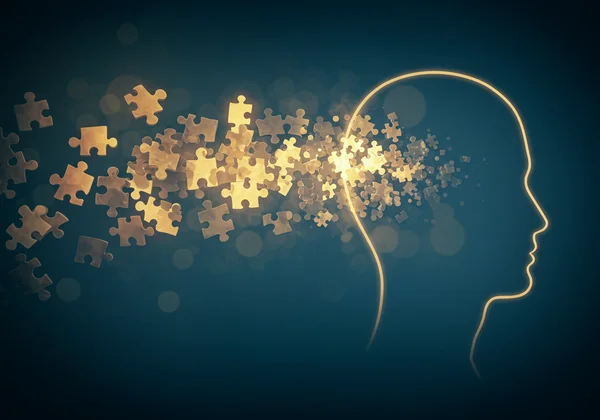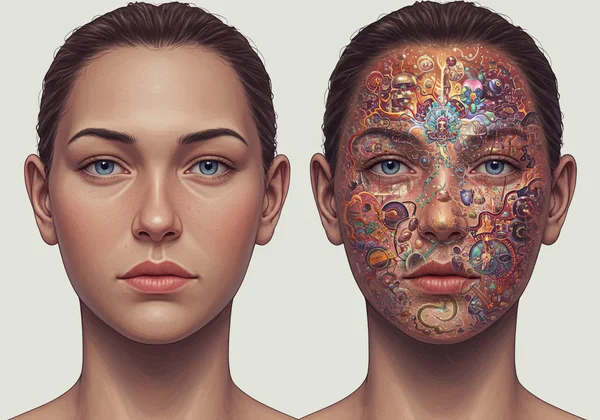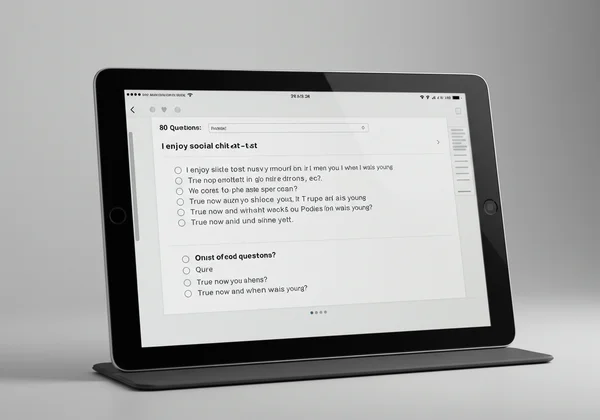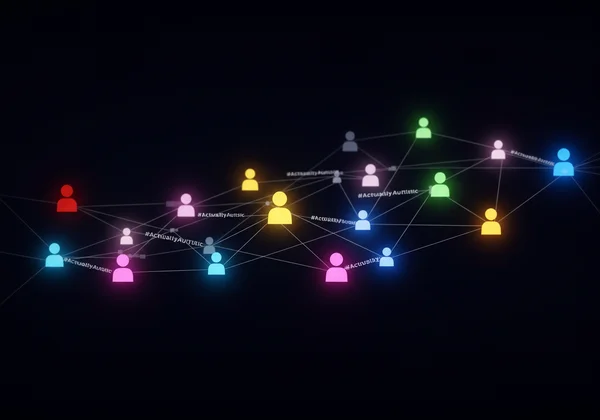Adult Autism & The RAADSR Test: A Guide to Self-Screening
August 17, 2025 | By Elara Vance
Do you often feel like you're playing by a different set of rules than everyone else? For many, the journey of adult autism begins with this very question, a quiet suspicion that grows over years. Discovering you might be autistic later in life can be a profound revelation, a key that finally unlocks a lifetime of experiences. This guide is your starting point—a comprehensive resource to help you understand the signs, explore powerful tools for self-discovery, and navigate the path toward understanding yourself. If you are ready to explore your own neurotype, a great first step is a structured autism screening.
What is Late Diagnosis Autism in Adults?
Late-diagnosed autism refers to identifying as autistic in adulthood, often after years of feeling different without knowing why. This isn't because autism suddenly develops; it was always there. Rather, a combination of factors can cause it to be missed during childhood and adolescence. Understanding why it was overlooked is often the first step toward self-acceptance.
For many, this journey is triggered by learning about autism online, seeing a character in media, or having their own child assessed. It's a moment where scattered puzzle pieces of your life—social challenges, intense passions, sensory sensitivities—suddenly form a coherent picture. This realization can bring a mix of relief, grief for the past, and hope for the future.

Common Reasons Autism is Missed in Childhood
Autism was once viewed through a very narrow lens, often missing those who didn't fit a specific stereotype. Many individuals, especially those assigned female at birth or who performed well academically, went unnoticed. They were often mislabeled as shy, anxious, quirky, or gifted but socially awkward. The internal experience of navigating a world not built for them was invisible to others.
Understanding Autistic Masking (Camouflaging)
Autistic masking, or camouflaging, is a primary reason for late diagnosis. It is the semi-conscious or unconscious act of suppressing natural autistic behaviors and mimicking neurotypical ones to fit in. This can include forcing eye contact, scripting conversations, or hiding stimming behaviors (like hand-flapping or rocking). While a useful survival strategy, masking is mentally and emotionally exhausting and can lead to autistic burnout, anxiety, and a diminished sense of self.
How Autism Can Present Differently in Women
Research and awareness have grown around the unique presentation of autism in women and those socialized as female. Their autistic traits may be more internalized. For example, special interests might focus on more "socially acceptable" topics like psychology, literature, or animals, making them less obvious. Socially, they may have a deep, analytical understanding of social rules and apply them meticulously, which can hide underlying challenges until social demands become too complex in adulthood.
Exploring Common Adult Autism Traits
Recognizing yourself in descriptions of autistic traits can be validating. It provides a language for experiences you may have struggled to articulate. Autism exists on a spectrum, meaning these traits manifest differently in every autistic person. You may relate strongly to some and not at all to others. This exploration is a key part of your self-discovery journey.

Differences in Social Interaction and Communication
Contrary to stereotypes, many autistic people are not antisocial; they are differently social. Socializing can be more deliberate and draining. Common experiences include:
- Finding small talk confusing or pointless, preferring deep conversations.
- Communicating very directly and honestly, which can be misinterpreted.
- Difficulty interpreting non-verbal cues like sarcasm, body language, or tone of voice.
- Feeling intense social exhaustion ("social hangover") after interactions.
The Power of Special Interests and Routines
What the outside world may see as "obsessions" are, for autistic people, deep and passionate special interests. These are a source of profound joy, expertise, and comfort. Engaging with a special interest can be a way to recharge and regulate emotions. Similarly, routines and predictability create a sense of safety and reduce anxiety in a world that can feel chaotic and overwhelming.
Sensory Processing: Sensitivity and Overload
Many autistic individuals have a different sensory experience of the world. This can involve being hypersensitive (over-responsive) or hyposensitive (under-responsive) to sights, sounds, smells, tastes, and touch. A fluorescent light might hum like a lawnmower, a light touch might feel painful, or you might not notice hunger or cold. When sensory input becomes too intense, it can lead to sensory overload, resulting in a shutdown (withdrawing) or a meltdown (an intense, involuntary loss of control).
Executive Functioning Challenges
Executive functions are the brain's "management system." For many autistic adults, this system works differently, leading to challenges with:
- Initiation: Difficulty starting tasks, even ones you want to do (autistic inertia).
- Planning & Organizing: Breaking down large projects into steps can feel impossible.
- Flexible Thinking: Shifting from one task to another or adapting to unexpected changes can be stressful.
- Working Memory: Holding information in your mind while using it can be a challenge.
What to Do If You Think You Are Autistic
If this guide resonates with you, you might be wondering, "What's next?" The path forward is personal, but it generally involves learning, self-reflection, and seeking the right support. Remember, this is your journey, and you are in control of the pace.
Your First Step: Taking a Reliable Autism Screening
Before diving into the complexities of a formal diagnosis, a great first step is taking a well-regarded screening tool. These are not diagnostic but are designed to help you organize your experiences and see how they align with known autistic traits. An online autism screening can provide valuable, structured insight in a private, low-pressure setting. This is an excellent way to start your exploration.
Why the RAADS-R Test is a Valuable Self-Reflection Tool
The Ritvo Autism Asperger Diagnostic Scale-Revised (RAADS-R) is a questionnaire designed specifically to help identify autistic adults who may have gone undiagnosed. It assesses traits across key areas like social relatedness, sensory-motor function, and special interests. The test on our platform is inspired by this framework, offering a confidential and accessible way to reflect on your life experiences through its 80 carefully crafted questions. Taking the RAADSR test can give you a comprehensive overview of your traits.

The Journey Towards a Professional Diagnosis
A formal diagnosis must be made by a qualified professional, like a psychologist or psychiatrist with experience in adult autism. The process can be lengthy and costly, but for some, it provides essential validation, access to workplace accommodations, and clarity. However, a formal diagnosis is not a requirement for self-acceptance or for identifying as autistic.
The Value of Self-Discovery and Community
Regardless of whether you pursue a formal diagnosis, the process of self-discovery is empowering. It allows you to reframe your past, understand your needs, and develop strategies for thriving. Connecting with the autistic community online—through hashtags like #ActuallyAutistic or forums on Reddit—can be life-changing. Finding others who share your experiences breaks the sense of isolation and provides a space for mutual support and understanding.

Your Journey to Self-Understanding Starts Here
Realizing you might be autistic isn't an endpoint—it's a new beginning. It’s permission to stop forcing yourself into a mold that never fit and to start building a life that honors your authentic self. Your experiences are valid, and this journey of discovery is yours to own.
Ready to take a meaningful first step? Our online, free autism test, inspired by the RAADS-R, is a confidential and insightful tool designed for self-reflection. It can provide the clarity you're seeking and serve as a foundation for your journey. Start Your Assessment now and gain a new perspective on who you are.
Frequently Asked Questions About Adult Autism
Can I self-diagnose autism with this test?
No, this test is a screening tool, not a diagnostic instrument. It is designed for educational and self-reflection purposes. A formal diagnosis can only be given by a qualified healthcare professional. However, tools like the RAADSR screening are a powerful way to gather information and decide if pursuing a professional assessment is the right next step for you.
What is a high score on the RAADSR test?
A score above the established clinical threshold on the RAADS-R suggests that you have a significant number of autistic traits. Our platform provides a detailed breakdown of your score, explaining what it means in the context of different domains (e.g., social, sensory). The score is best understood not as a label but as data to help you understand your unique neurotype.
How do I interpret RAADSR test results?
Upon completion of the test, you will receive a total score and sub-scores for each category, along with explanations of what these scores indicate. For an even deeper understanding, our platform offers an optional AI-powered personalized report. This report contextualizes your results based on your unique background, offering insights that go beyond the numbers. To get your results, you can take our free test.
What is the difference between the RAADSR and other autism tests?
The RAADS-R was specifically designed to identify autistic adults, including those who have learned to mask or camouflage their traits throughout their lives. It asks about experiences in both childhood and adulthood, making it particularly effective for late-discovery journeys. Other screeners may be geared more toward children or may not capture the subtleties of the adult autistic experience as effectively.